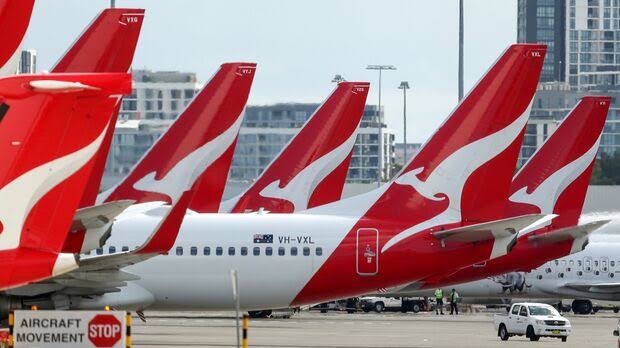Fatal Incident Involving KLM Plane: Passenger Pulled Into Engine During Boarding
Fatal Incident Involving KLM Plane: Passenger Pulled Into Engine During Boarding
A tragic and horrifying accident occurred at Amsterdam’s Schiphol Airport involving a KLM Royal Dutch Airlines aircraft, where a passenger lost their life after being pulled into a plane’s engine. The incident, which took place on a scheduled flight preparing for departure, has shocked the aviation community and raised serious questions about airport safety protocols.
The Incident Unfolds
According to official reports, the fatal event happened on April 17, 2025, as passengers were boarding KLM Cityhopper flight KL1341, a scheduled short-haul flight from Amsterdam to Billund, Denmark. The Embraer 190 aircraft was stationed on the tarmac, and preparations were underway for takeoff. In a matter of seconds, a person was sucked into the aircraft’s jet engine while it was still running—a moment that left both crew and passengers in disbelief.
Eyewitnesses described a chilling scene. One ground crew member said, “There was a loud noise, then panic. People were screaming and confused. It all happened so quickly.” The engine was reportedly on for standard pre-flight checks when the victim approached too closely, breaching the safety perimeter.
Identity of the Victim
Initially, there was uncertainty about whether the victim was a passenger or a member of the ground crew. However, later confirmations from Dutch military police (Koninklijke Marechaussee) revealed that the person was indeed a passenger. Authorities have not yet released the victim’s identity, pending notification of their next of kin.
Preliminary investigations are ongoing to determine how and why the passenger ended up near the engine intake. It is still unclear whether this was a tragic accident or if other factors were involved. The possibility of a deliberate act has not been ruled out, but officials are urging the public not to speculate while investigations continue.
Response From Authorities and KLM
KLM issued a brief but emotional statement following the incident:
> “We are deeply saddened by the tragic event that occurred at Schiphol Airport involving one of our aircraft. Our thoughts are with the victim’s loved ones, and we are cooperating fully with the authorities in their investigation.”
The Dutch Safety Board has also launched an investigation into the incident, alongside aviation and airport authorities. Schiphol Airport temporarily halted operations on the affected runway and re-routed flights to other terminals while emergency crews managed the situation.
Passenger and Crew Safety Protocols in Question
While rare, incidents involving individuals being ingested into jet engines have happened before, usually in maintenance zones or under highly specific circumstances. Airports and airlines follow strict safety protocols to keep people away from engine zones during operation. However, this tragic occurrence has sparked renewed discussions about:
Passenger movement and control on the tarmac
Ground crew training and oversight
The timing of engine start procedures during boarding
Security measures that prevent individuals from entering restricted areas
Aviation safety experts are calling for a comprehensive review of boarding procedures and whether passengers should be allowed anywhere near operating engines at any time.
Psychological Support and Reactions
Passengers and airport staff who witnessed the incident have been offered psychological support. Many are said to be traumatized, and some fellow passengers have shared on social media that they may never feel safe flying again.
Dutch citizens and frequent travelers alike expressed shock and grief on various online platforms. One user on X (formerly Twitter) wrote, “I fly through Schiphol every month. Thinking that something like this could happen is terrifying.”
Past Similar Incidents
Although exceedingly rare, there have been a handful of similar incidents globally. In 2015, a ground worker at Mumbai Airport died after being ingested into a running engine of an Air India aircraft. Each time, such accidents have led to procedural overhauls.
With this KLM case gaining international attention, industry regulators may be prompted to re-evaluate current international standards.
What Happens Next
Authorities have secured all available footage from airport surveillance and are analyzing it to better understand the victim’s movements leading up to the incident. The final investigation report may take weeks or months, but early findings are expected to be shared soon to prevent similar tragedies.
In the meantime, KLM has grounded similar aircraft temporarily for inspection and staff review. Airlines across Europe are also reviewing their own protocols in light of this shocking development.
This event has left a mark not only on KLM and Schiphol Airport but also on the broader aviation industry. Safety has always been the number one priority in air travel, but this incident serves as a grim reminder that even the smallest oversight can have devastating consequences.

![Co powinien zrobić Zbigniew Ziobro? [SONDAŻ] Zdaniem 72 proc. ankietowanych Zbigniew Ziobro powinien wrócić do Polski i odpowiedzieć przed sądem w sprawie Funduszu Sprawiedliwości. Przeciwnego zdania jest 14 proc. ankietowanych. Również 14 proc. nie ma zdania w tej sprawie.](https://sportdomain.com.ng/wp-content/uploads/2025/11/h5jk9lBaHR0cHM6Ly9vY2RuLmV1L3B1bHNjbXMvTURBXy9kNGYzZDhmNGY2ZjlhNzI3YjlkMjIwZWUxMzYyMjU2NS5qcGeSlQPNAXbNA97NEnDNCmCTBc0C0M0BlN4AAqEwB6ExBA.avif)




